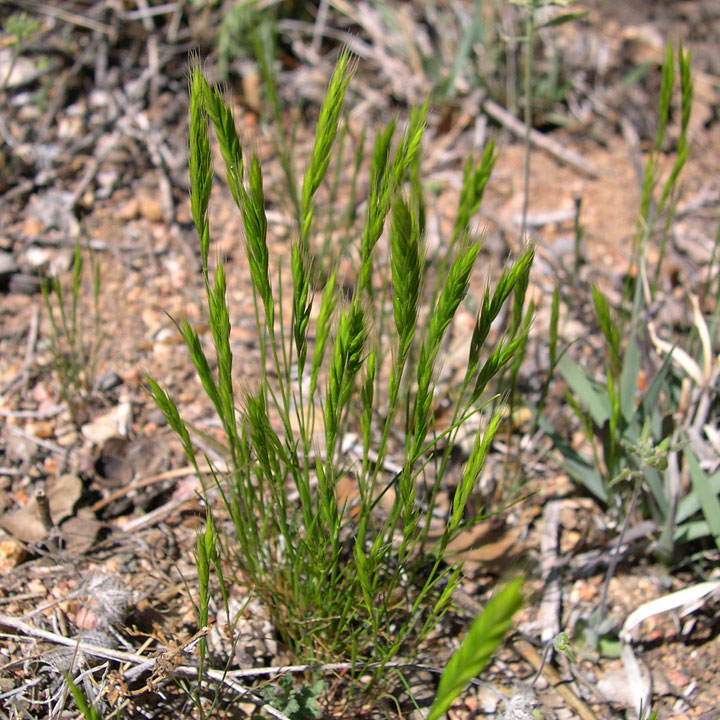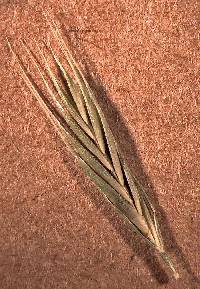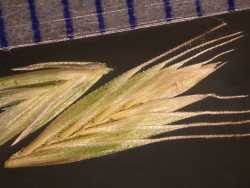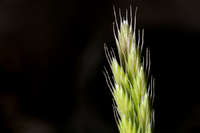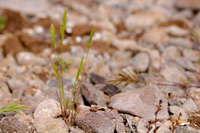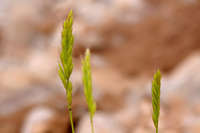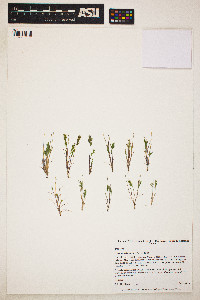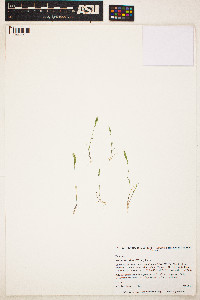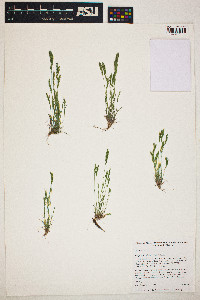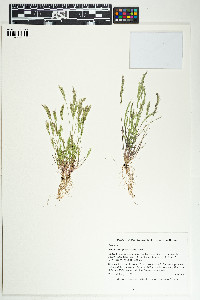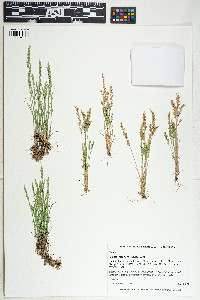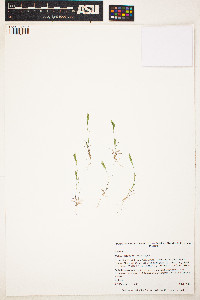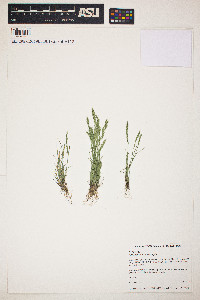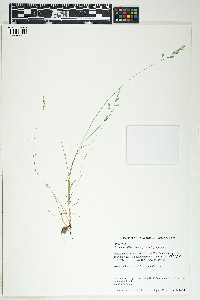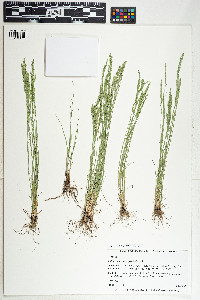- Home
- Search
- Images
- Datasets
- Sample Use
- How to Cite
- Additional Information
- About NEON
- NEON Data Portal
- ASU Biocollections
- About Symbiota
|
|
|
|
Family: Poaceae
sixweeks fescue, more...sixweeks fescue, sixweeks fescue
[Festuca gracilenta Buckley, moreFestuca octoflora Walter, Festuca octoflora subsp. hirtella Piper, Festuca octoflora var. aristulata L.H.Dewey, Festuca octoflora var. glauca (Nutt.) Fernald, Festuca octoflora var. hirtella (Piper) Hitchc., Festuca octoflora var. tenella (Willd.) Fernald, Festuca tenella var. glauca Nutt., Vulpia octoflora f. hirtella (Piper) Blom, Vulpia octoflora var. glauca (Nutt.) Fernald, Vulpia octoflora var. hirtella (Piper) Henrard, Vulpia octoflora var. tenella (Willd.) Fernald] |
Slender, decumbent to erect annual 1-6 dm, glabrous or hairy; blades flat or involute, setaceous, 0.5-1 mm wide; infl slender, 3-20 cm, with a few ascending or rarely spreading branches; spikelets flattened, with 5-11+ fls; first glume subulate, 1- veined, 1.7-4.5 mm, the second lanceolate, 3-veined, a fourth longer; florets closely imbricate, the internodes of the rachilla typically 0.5-0.7 mm; lemmas involute, straight, obscurely veined, glabrous or merely scabrous in our vars., soon diverging and exposing the rachilla, the lowest one 2.7-6.5 mm, with an awn 0.3-6(-9) mm; anther 1(-3), 0.3-1.5 mm; grains mostly 1.7-3.3 mm; 2n=14. Dry or sterile soil; Que. and N. Engl. to B.C., s. to Fla. and Calif. (Festuca o.) Two ill-defined vars. in our range: In the mostly southern var. octoflora the spikelets are 5.5-10 mm, and the awn of the lowest lemma is 0.3-3 mm. In the mostly more northern var. glauca (Nutt.) Fernald the spikelets are 4-5.5 mm, and the awn of the lowest lemma is 2.5-6+ mm. Gleason, Henry A. & Cronquist, Arthur J. 1991. Manual of vascular plants of northeastern United States and adjacent Canada. lxxv + 910 pp. ©The New York Botanical Garden. All rights reserved. Used by permission. Cronquist et al. 1977, FNA 2007, Gould 1980, Kearney and Peebles 1969 Common Name: sixweeks fescue Duration: Annual Nativity: Native Lifeform: Graminoid General: Small annual grass, 15-30 cm tall; stems solitary or loosely tufted, erect, slender. Vegetative: Blades narrow, 1-2 mm wide, 2-10 cm long, the margins rolled upward; sheath smooth to puberulent; ligule 0.5 mm long. Inflorescence: Narrow panicle, 2-10 cm long; spikelets 6-8 mm long, 5-13-flowered; lower glume 3-5 mm long, lance-shaped, 1-nerved; upper glume 3-5 mm long, lance-shaped, 3-nerved; lemma 4-5 mm long, firm, lance-shaped, smooth or rough-textured, with an awn 3-5 mm long; disarticulation above the glumes and beneath the florets. Ecology: Found on sterile, rocky, open ground below 6,500 ft (1981 m); flowers May-July. Distribution: Native to much of N. Amer and in every state in the US; south to c MEX and in S. Amer. Notes: Annual grass varying in size from very small to ca. 30 cm, possessing 5 or more imbricated florets per spikelet, each with an awn. Var. octoflora is told apart by its smooth lemmas, while var. hirtella has scabrous to pubescent lemmas. Schismus barbarus and Schismus arabicus superficially resemble this species, and can grow in similar habitats. A hand lens is handy in distinguishing the species; V. octoflora has awns on all the lemmas, while Schismus lack awns but have glumes with hyaline (partly transparent and whitish) margins and tips, giving the spikelets a green-and-white striped look. Ethnobotany: Unknown Etymology: Festuca is Latin for grass stalk or straw, while octoflora is Latin for 8-flowered. Synonyms: Festuca octoflora Editor: SBuckley 2010, FSCoburn 2015, AHazelton 2015 |


